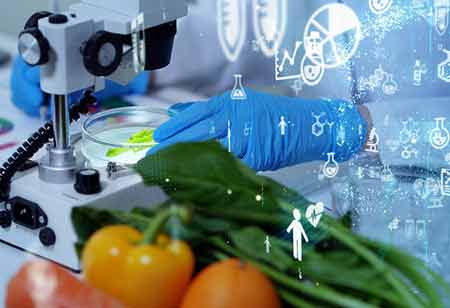Thank you for Subscribing to Food Business Review Weekly Brief
- Home
- Topics
- Alternative Proteins and Plant Based Food
- Beer and Wine
- Canned Beverages
- Coffee And Tea
- Food and Beverage Consulting
- Food and Beverage Financial Service
- Food And Beverages Marketing
- Food Distributors
- Food Ingredients
- Food Sustainability
- Plant Based Food and Beverages
- Seafood Suppliers
- Supplement Manufacturing
- Wine Investment
- News
- Vendor Viewpoint
- CXO Insights
- Conferences
- Newsletter
- CXO Awards
-
Controlling Negative Effects of EC on Food Safety!
The EC(environmental changes) that we see today are hazardous to the food business.

By
Food Business Review | Thursday, September 23, 2021
Stay ahead of the industry with exclusive feature stories on the top companies, expert insights and the latest news delivered straight to your inbox. Subscribe today.

EC can directly or indirectly influence food safety and must be satisfactorily addressed by encompassing proper methodologies.
FREMONT, CA: The EC(environmental changes) that we see today are hazardous to the food business. The rate of foodborne diseases is radically extending due to direct or indirect environmental changes. A few, rainfall contaminated with chemicals and natural wastes can contaminate food. Flooding can increase unsafe food because of improper sanitation, storing, and cooking because of the absence of facilities.
Similarly, it can contaminate farming oil, water, and different items with mechanical waste and human sewage. Certainly, even the temperature changes can cause extreme impacts with the end goal that the high temperature is ideal for the endurance, development, and the method of transmission of parasitic, bacterial, and viral contaminations.
From the previously referred examples, it is apparent that environmental changes will create more food safety challenges. Therefore, turning around EC is preposterous; in any case, it can mitigate its effect on food safety.
Here are a few methodologies that developing countries can embrace to conquer the unfriendly impacts of EC.
• Developing nations should encompass the adverse effects of EC to set themselves up to address the impacts by making stricter food safety guidelines/models and more up-to-date mediations.
• All related divisions like health, environment, agribusiness, and veterinary health administrations ought to team up to forestall, recognize, and control the expanding foodborne dangers of EC.
• After any EC occurrences or natural events, should set up successful assessment frameworks to lessen the danger and guarantee the best possible removal of contaminated food.
• International food safety and public health associations must team up to manage food safety concerns related to environmental changes by building successful food safety plans like crisis food safety risk and reaction.
• Apply viable food safety risk correspondence during catastrophic events.
• Develop viable monitoring and observation programs to gather great information to create predictive displays to react quickly to food safety risks.
• Utilize considerable advancements like X-rays, filtration gadgets, and others to identify and control foodborne sicknesses.
• Utilize applied and cutting-edge advancements to take care of genuine issues.






